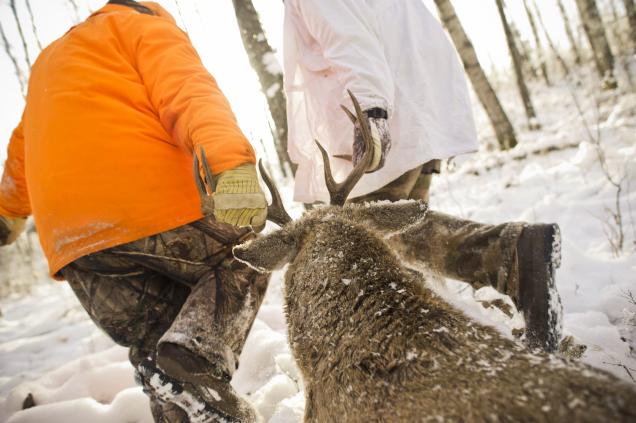With population and harvest totals declining at a constant pace in the northern section of Michigan (also known as the Upper Peninsula), the Michigan Department of Natural Resources has suggested to the Natural Resources Commission, the panel responsible for setting Michigan’s hunting and fishing regulations, that deer hunting be ended in the U.P.
This is certainly a drastic measure for a region that was once considered the best place to hunt whitetails. Some critics think this proposed restriction will not sufficiently revitalize the local deer population. An in-depth analysis from Realtree takes a closer look at the situation, and how Michigan got there.
Before settlers arrived &mdash when winters were just as harsh as they are now &mdash there were few whitetails in the virgin stands of pine and aspen. But when logging operations cleared the land and allowed for new growth to occur, whitetails found a buffet of nutrition. Numbers boomed, and winters were still long and cold.
Today? Logging is done on a smaller scale, and much of the region is National Forest — making prescribed fires and timbering a much trickier proposition. The habitat of today resembles that of pre-settlement. And deer numbers are starting to match those times as well.
In addition, there are wolves in the Upper Peninsula. It’s no secret that wolves are voracious predators and that they can have an impact on deer numbers. Sensible predator control should take place, and that will likely help the situation some. But it’s not a cure-all.
Read on for a full account of the region’s rich history of deer hunting and the likely outcome of this proposal.









![The Best Deer Camp Chili [VIDEO] Deer Chili Ingredients, Tomatoes, Chili Spices](/wp-content/uploads/2015/10/Deer-Chili-Deer-Camp-Recipe-218x150.jpg)








![How to Call Elk Early in the Season [VIDEO]](/wp-content/uploads/2016/08/byers003-218x150.jpg)




![Idiots Disturb Hunter: How Would You Have Handled It? [VIDEO]](/wp-content/uploads/2015/10/DSC00110-e1474487693878-100x70.jpg)
![Albino Buck Shocked to Shed His Antlers [VIDEO]](/wp-content/uploads/2015/10/AlbinoDeer-100x70.jpg)